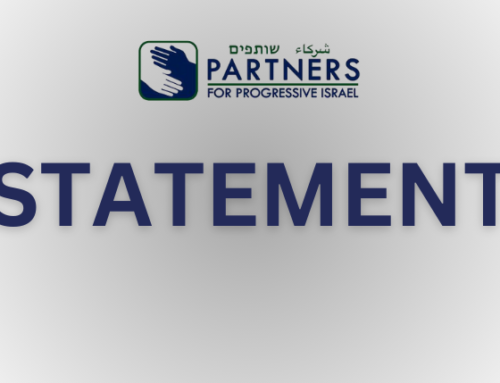This is a follow-up to my prior post, ” Drawing Parallels between America’s Struggle over Slavery and Today’s Israel & Palestine.” I learned two main lessons from studying the antebellum antislavery parties that are relevant for today’s politics. First, when trying to convince the wider public to change its stance on an issue, it is better to appeal to arguments based on interest rather than morality. Both the Liberty Party and the Garrisonians tended to use moralistic arguments against slavery based on biblical quotes. Their opponents in the South merely quoted the Bible to the effect that slavery was recognized and apparently sanctioned by God. Both the Free Soil Party and the Republicans argued on how slave labor would undercut the value of free labor in the Western territories as it had in the South leaving Northern immigrants impoverished.
Today, some historians cite these arguments to contend that the Free Soilers and Republicans were racists—which has the effect of judging them outside of the political environment in which they operated. For our purposes the lesson to be drawn is that the Israeli Left should advocate for the two-state solution based on demographics, the burden of the settlements on the Israeli economy, and Israel’s standing in the world, rather than arguments based on Palestinian rights and Jewish values.
Those of a religious bent or those who are highly motivated by a secular political ideology, often reject such an approach as unprincipled. But people are much more willing to go against their short-term interests if you can convince them that it is in their long-term interests in this world, rather than merely in the next. J Street supporters should keep in mind that to convince others of the efficacy of the two-state solution, they should not rely merely on quotes from the Torah or the Talmud.
The second lesson is the importance of the political environment being “ripe” for a solution. The situation was not ripe when the Liberty Party was created in 1840. It became riper in 1844 with the debate over whether or not to admit Texas to the Union as a slave state. It became very ripe by 1848 because of the debate over the status of the new territories captured from Mexico in the Mexican War. By corresponding with the leaders of the Conscience Whigs in Massachusetts and the antislavery Democrats in New York, Salmon Chase was able to judge when the moment was ripe for the creation of a wider antislavery party, the Free Soil Party. The Free Soil Party won 14 percent of the vote in the North, ten percent in the country, and carried Vermont. In 1849-50 the situation was ripe for the Free Soil Party as Congress debated the terms of an intersectional compromise on slavery between the North and the South. Once the Compromise of 1850 was passed in September, public opinion and the media concluded that the slavery issue was solved and the environment suddenly became unripe for an antislavery party. In the 1852 presidential election, the party’s nominee won only five percent of the vote and the party was reduced to its Liberty roots.
Only with the passage of the Kansas-Nebraska Act in May 1854 did the situation become permanently ripe for an antislavery party. After the Whig Party’s final general, Winfield Scott, lost the 1852 election, the Whigs began to come apart. In 1854, they were infiltrated in the Northeast by the nativist Know Nothings. Chase used the new environment to build a new antislavery coalition based on Free Soilers, antislavery Whigs in the North and even some antislavery Democrats in the North. The party named a war hero from the Mexican War and explorer of the West, John C. Fremont, as the first Republican nominee for President in 1856. Fremont carried the upper tier of Northern states in which people of Yankee stock from New England predominated. The party then developed a careful strategy to attract Know Nothings in the North and carry the North with a combination of Free Soil antislavery politics and Whig economic policy. Lincoln’s top aides convinced the 1860 Republican Convention in Chicago that an Illinois candidate was best placed to carry the states of the lower North like Illinois, Indiana, and Pennsylvania.
J Street is now at the stage that the antislavery movement was in 1852. It is in the second stage of a grassroots Jewish peace movement in the U.S. It expanded rapidly during Obama’s first term, but when Obama failed to deliver it began losing members to Jewish Voice for Peace. To create peace, J Street needs a third stage—the creation of a think tank that will combine an understanding of national politics in the U.S., Israeli politics, and other peace processes in deeply-divided societies like Bosnia, Northern Ireland and South Africa into a strategy for achieving Middle East peace.
There were rumors of such an entity in 2007-08 before J Street was created. It was said that Americans for Peace Now, Brit Tzedek and Israel Policy Forum would all combine to create a super peace organization. Instead, the tiny J Street office in Washington combined with Brit Tzedek and worked closely in tandem with APN. But the Israel Policy Forum, founded at Yitzhak Rabin’s urging in 1993, remains short of funds and out of sync with other groups.
Only by creating a version of the AIPAC-created Washington Institute for Near East Policy (now independent), focused on Israeli-Palestinian and regional peace, can today’s anti-occupation movement successfully imitate the antebellum Republicans and achieve its goal. I cannot guarantee that such a think tank will find a successful strategy, but I can guarantee that it will not do so, if it does not look for one.
The think tank would have three major challenges in promoting peace under the present conditions in the Middle East: working with a divided government in the United States; justifying the two-state solution by proving that it is both more practicable than a one-state solution and more just; and dealing with ongoing contemporary issues such as nomination battles for relevant administration appointments, and overall Middle East policy.




Leave A Comment